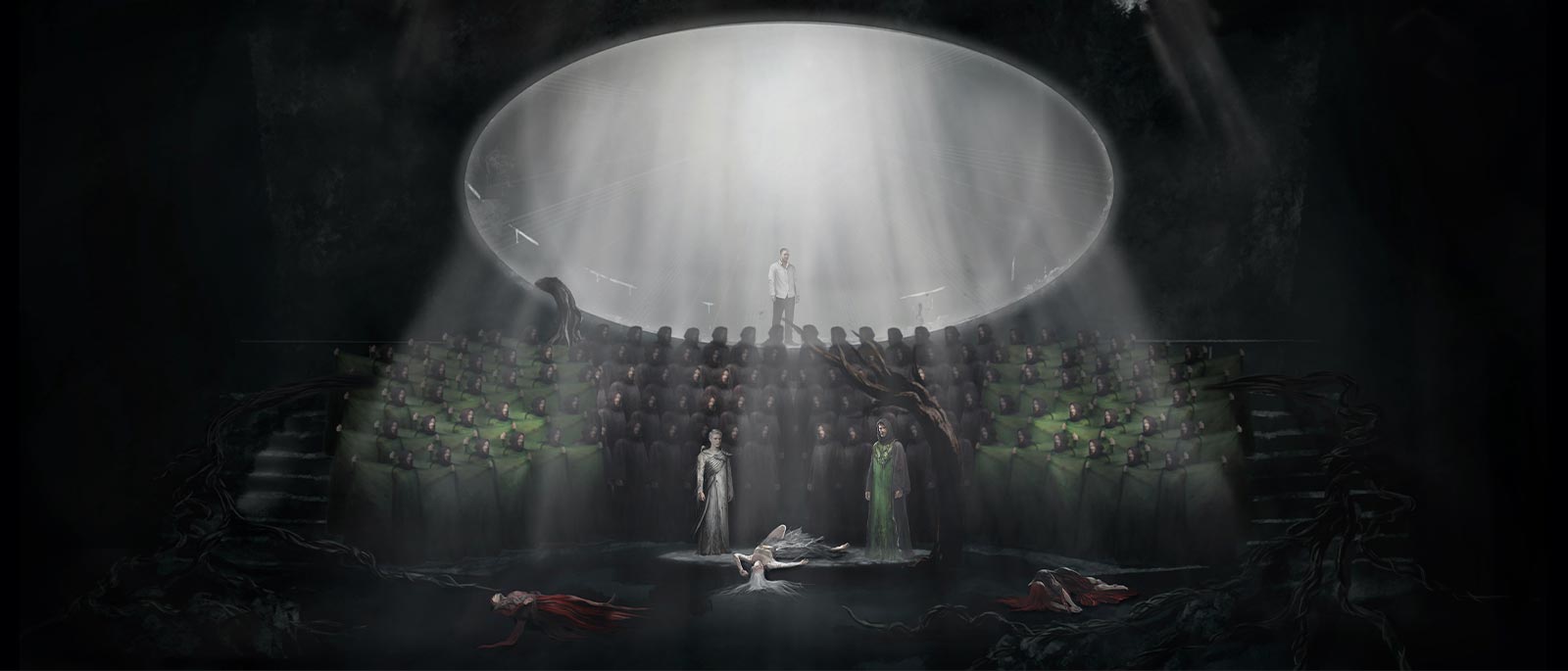
Modern Myth
When François Girard’s ethereal production of Wagner’s Parsifal premiered at the Met in 2013, it was an immediate triumph, hailed by The New York Times as “brilliant … thoughtful and intrepid, full of striking imagery.” Next month, he’s back to direct a new production of Lohengrin, returning Wagner’s soaring masterpiece to the Met stage for the first time in 17 years. Ahead of the production’s highly anticipated premiere on February 26, Girard spoke to the Met’s William Berger about picking up where his celebrated staging of Parsifal left off.
François Girard
This will be your third Wagner production for the Met—what attracts you to his operas?
I find the music endlessly absorbing. And that’s the number-one criteria, because deciding to work on an opera is almost like buying a house—you’re going to live in it. I am also drawn to his use of myths and legends and all of the abstract ideas. Probably because I’m a filmmaker, when I work on an opera, I like to move away from naturalism.
Parsifal is one of the most complicated pieces in the repertoire, both dramatically and in terms of the themes that Wagner explores. How did your experience with Parsifal inform your work on Lohengrin?
Once you’ve done Parsifal, you know the destination of Wagner’s whole lifetime of ideas about music and theater, so when you go back and look at Lohengrin, you see the seeds of what’s to come. It gives you a retrospective on what you’re dealing with. The other obvious connection is the sequel-prequel relationship between these two works, because in the opera, Lohengrin is actually the son of Parsifal.
Piotr Beczała in the title role of Wagner's Lohengrin
How does that factor into your staging?
Treating this as a sort of sequel presented an interesting way to deal with the issues at stake. One of the difficulties of Lohengrin is that it presents one of the few historical figures in Wagner’s work, King Heinrich, so there is a sense of reality that isn’t in the other pieces. But if our Parsifal was set in the present day, that throws Lohengrin into a diffused future, which allows us to approach this as a futuristic echo of history, rather than being totally literal.
Are the two productions visually similar?
There are some aesthetic continuities, but this production is not as naturalistic as Parsifal. Lohengrin will be dressed like the knights in Parsifal, and there is some similar imagery of the cosmic sky in Peter Flaherty’s video projections. They’re very much in the same language, but it’s clear we’re moving from the magical world to the real world. My dream is that both productions could be played together on consecutive nights—to really show the connections between these two extraordinary pieces.
Edited by Christopher Browner
A Met writer and radio producer, William Berger is the author of numerous books about opera, including Wagner Without Fear.